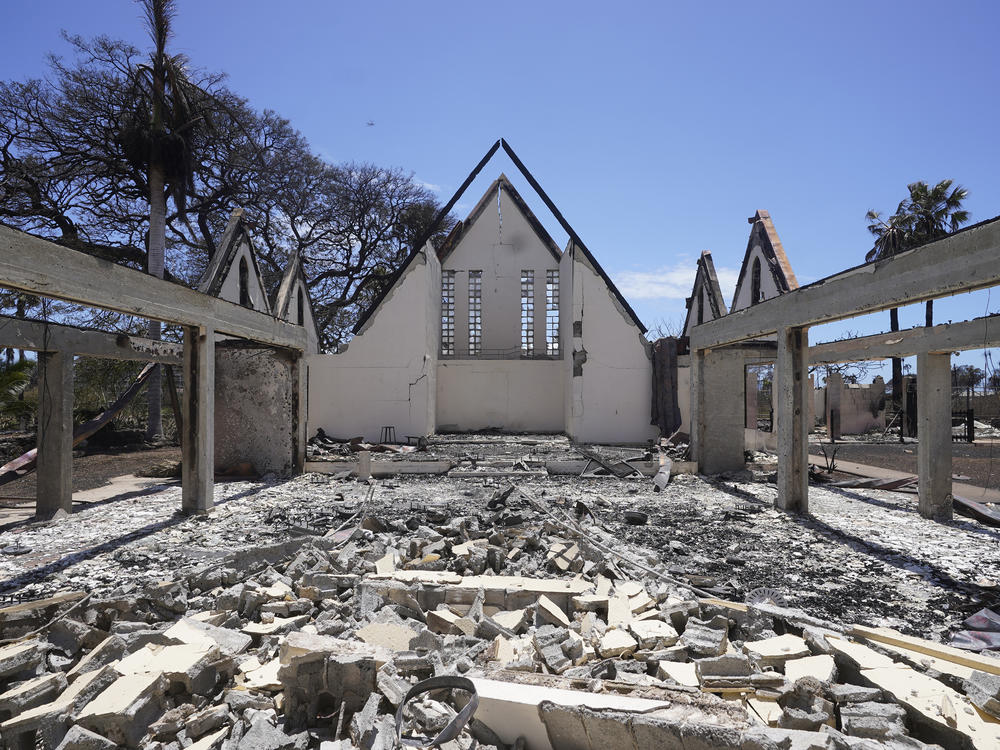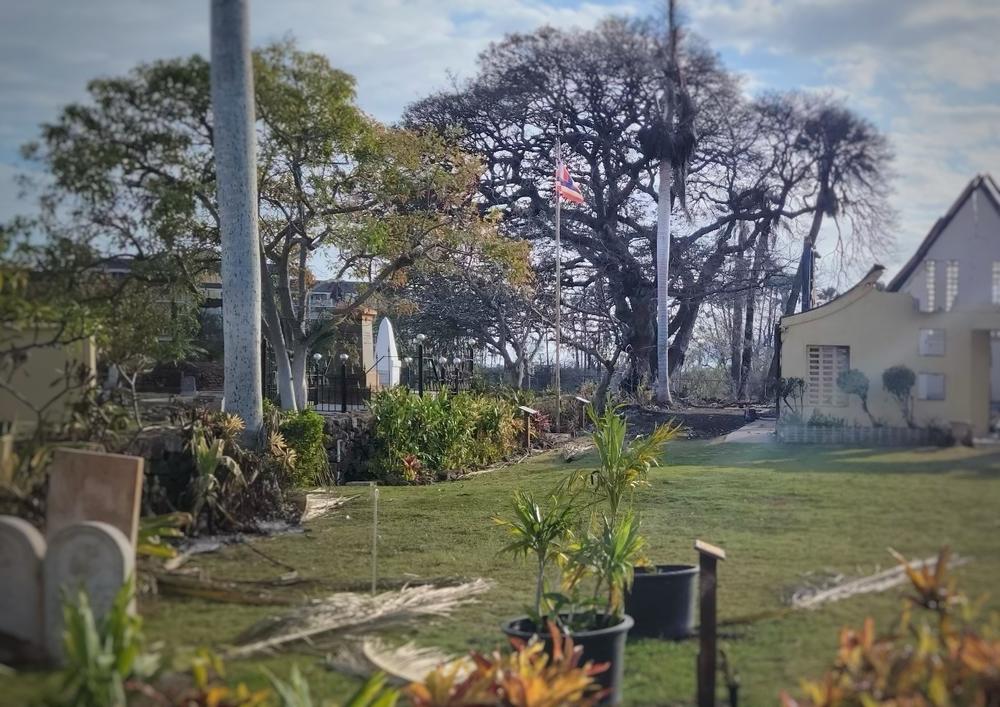Section Branding
Header Content
Maui's cultural landmarks burned, but all is not lost
Primary Content
Within a couple of days of the start of Maui's fires, government officials, preservation experts and contractors were meeting to talk about how to coordinate the cleanup effort with the salvaging and documenting of cultural artifacts.
"I hope we can work toward understanding what the needs are with regard to historic preservation and the resources that are important to our people, important to our history," said archeologist Tanya Lee-Greig, kicking off the discussion. Lee-Greig has overseen cultural preservation projects on Maui.
Janet Six, principal archaeologist for the County of Maui, was also at the meeting, held online. She said the reason officials and culture workers are focusing on the tourist town of Lahaina is because of how the fires ravaged the national historic landmark district.
"It's a landmark district we're dealing with, so we're wanting to expedite the emergency situation," Six said in an interview. "But at the same time, we need to be mindful that we're working in an area with buildings, some of which are 150 years old."
A complex past
Six said people have been living in Lahaina for more than a thousand years; it has a complex past.
"[Native Hawaiians] made an island called Moku'ula in the middle of a wetlands," Six said. "And that became the royal seat."
Moku'ula served as the private residence of King Kamehaha III in the mid-1800s and the Hawaiian Constitution was drafted there. But by 1919, local authorities backfilled the wetlands, burying Moku'ula and turning it into a park.
"That's now under a baseball field," Six said. "Outta sight, outta mind."
Most of the historic landmarks in Lahaina that survived before the fire had dated back to the colonial sugar plantation era of the 1800s, because the plantations destroyed the pre-colonial sites.
But the fire has damaged these structures; now they're in various states of collapse, and their artifacts are endangered or incinerated. Lahaina's Heritage Museum was housed in the Old Courthouse. Its roof collapsed, though much of the walls are still standing, because they're constructed from heat-resistant coral.
Kimberly Flook, deputy executive director of the Lahaina Restoration Foundation, which oversees historic buildings, said they hadn't yet been allowed back to survey the damage. She's worried many of the museum's most precious items are lost: the flag that was lowered when the Kingdom of Hawaii was overthrown, Kapa artwork pieces, feather work from native Hawaiians.
It makes her grateful for the extensive digitization the museum completed a few years ago.
"We may have lost the physical elements," Flook said, "but we have amazing photographs and recreations and translations and transcriptions."
There's another reason for hope: some of Lahaina's historic sites, like the Waiola cemetery (also known as Waineʻe), one of Hawaii's first Christian cemeteries, remains mostly intact. It's the burial ground of important historical figures including Queen Keopuolani, the first Hawaiian baptized as a Protestant, and King Kaumuali'i, the last king of Kauai.
"The flag pole that is at the cemetery, the flag itself, was completely untouched in the midst of all of the damage," Lee-Greig said in the meeting. But the Wailoa church right next door was burned to the ground.
Culture survives
When an extreme event like a wildfire burns through a place, it's not just culturally meaningful physical structures that are at risk. The same goes for the rituals and traditions connected to those places.
One example is the annual Emma Farden Sharpe Hula Festival, which usually takes place under the banyan tree in downtown Lahaina, a local landmark that was badly burned. Organizer Daryl Fujiwara said he had intended to cancel the 2023 festival, because he thought it might be too much for the dancers.
"A lot of dancers in these hula schools, they're all facing so many hardships," he said. "A lot of them lost their homes."
But Fujiwara said the performers still wanted to go ahead. So he pivoted to producing the event virtually, on Facebook.
The performers this year danced indoors in front of a backdrop of white sheets and floral arrangements instead of under the tree. It wasn't the same. But Fujiwara said that because of the plundering and negligence of colonial powers, Hawaiians have learned to deal with the loss of many important historic and sacred sites.
"Even though we've lost those places, they still remain in our stories, in our songs and our dances," Fujiwara said. "And that's how we have been able to survive."
Audio and digital story edited by Jennifer Vanasco. Audio produced by Isabella Gomez Sarmiento.
Copyright 2023 NPR. To see more, visit https://www.npr.org.




